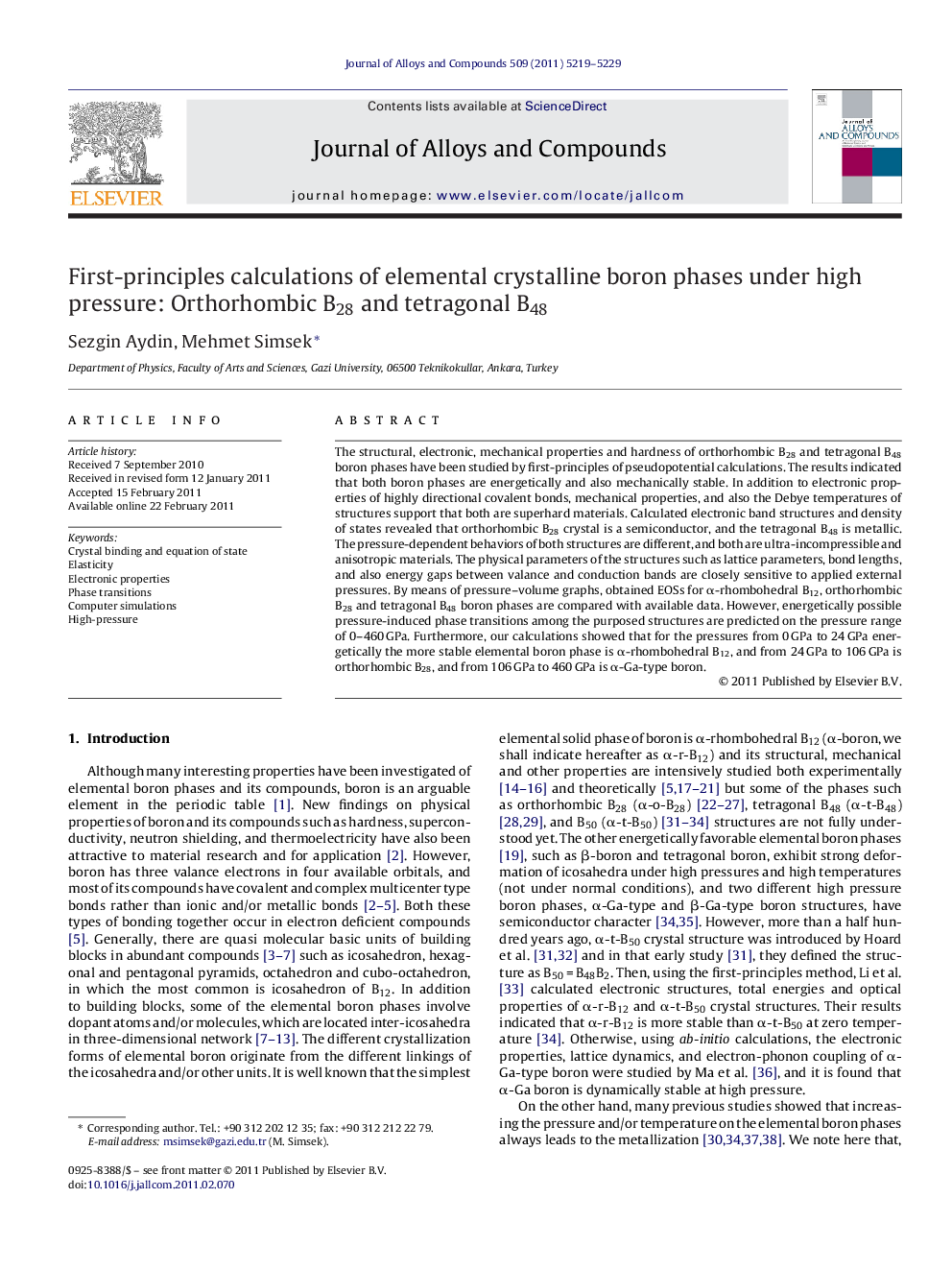| Article ID | Journal | Published Year | Pages | File Type |
|---|---|---|---|---|
| 1617446 | Journal of Alloys and Compounds | 2011 | 11 Pages |
The structural, electronic, mechanical properties and hardness of orthorhombic B28 and tetragonal B48 boron phases have been studied by first-principles of pseudopotential calculations. The results indicated that both boron phases are energetically and also mechanically stable. In addition to electronic properties of highly directional covalent bonds, mechanical properties, and also the Debye temperatures of structures support that both are superhard materials. Calculated electronic band structures and density of states revealed that orthorhombic B28 crystal is a semiconductor, and the tetragonal B48 is metallic. The pressure-dependent behaviors of both structures are different, and both are ultra-incompressible and anisotropic materials. The physical parameters of the structures such as lattice parameters, bond lengths, and also energy gaps between valance and conduction bands are closely sensitive to applied external pressures. By means of pressure–volume graphs, obtained EOSs for α-rhombohedral B12, orthorhombic B28 and tetragonal B48 boron phases are compared with available data. However, energetically possible pressure-induced phase transitions among the purposed structures are predicted on the pressure range of 0–460 GPa. Furthermore, our calculations showed that for the pressures from 0 GPa to 24 GPa energetically the more stable elemental boron phase is α-rhombohedral B12, and from 24 GPa to 106 GPa is orthorhombic B28, and from 106 GPa to 460 GPa is α-Ga-type boron.
► The structural, electronic, mechanical properties and hardness of orthorhombic B28 and tetragonal B48 boron phases have been studied by first-principles of pseudopotential calculations. ► The results indicated that both boron phases are energetically and also mechanically stable. ► Calculated electronic band structures and density of states revealed that orthorhombic B28 crystal is a semiconductor, and the tetragonal B48 is metallic. ► The pressure-dependent behaviors of both structures are different, and both are ultra-incompressible and anisotropic materials.
